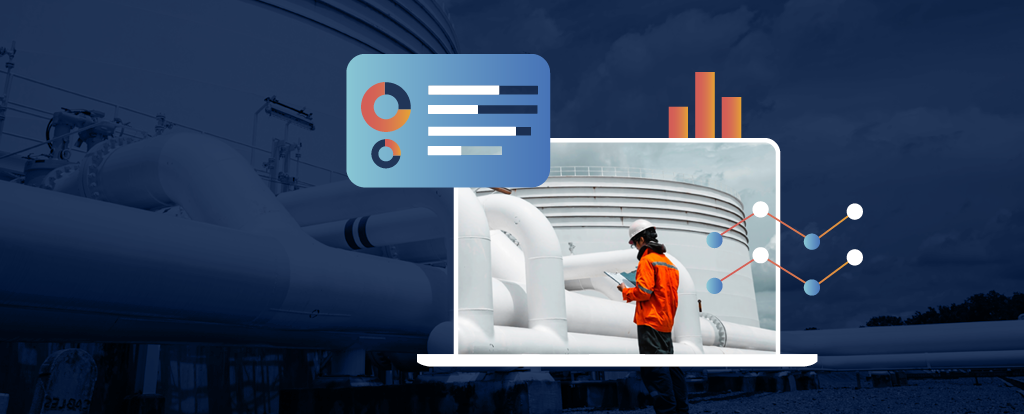Asset Durability Management (ADM) is a rapidly growing field of activity. Around the world, companies must balance their economic, social and environmental sustainability with the need to maintain and optimize their physical assets. With successive retirements, restructurings and relocations, corporate memory is being lost, as some of the knowledge and expertise disappears, making it difficult to determine the health and performance of assets. The development of cloud software such as a SaaS service has paved the way for significantly improved overall management of capital-intensive assets, whether they are infrastructure or equipment.
Over the past decade, we have entered a new era of management capability, driven primarily by comprehensive, integrated cloud software and data valuation capabilities. Efficient management of capital asset durability is at the heart of the new platforms that gather the data needed to reduce capital and operating expenses and support more effective long-term strategic planning for the acquisition and sustainability of key assets.
In addition, important recent ESG regulations require reporting not only on a company’s overall environmental, social and governance impact performance, but also on its financial performance. Integrating asset durability management into an ESG framework requires an integrated approach to sustainability that considers the environmental, social and governance impacts of a company’s operations and asset management practices. Thus, companies can improve their sustainability performance, strengthen their reputation and generate long-term value for their stakeholders.
In this context, the prospect of using integrated software to improve the overall management of a company’s or an organization’s assets – both infrastructure and equipment – appears to hold great promise.
An Emerging ADM Approach to Asset Management
Over the past decade, several engineering experts, while working with different clients on a range of problems, have begun to notice interesting possibilities for identifying and resolving chronic degradations or failures with infrastructure and equipment in various sectors.
For example, a key issue for many clients is the ability to capture and use meaningful data about the health of their assets in a regular or standardized form. All too often, the data for various assets has been gathered and reported in different ways, making it difficult to assess performance trends, compare, and develop accurate valuations and acquisition/maintenance plans for fixed assets with consideration of economic, social, and environmental impacts. The availability of accurate, standardized data in useful tabular and visual formats is undoubtedly a significant improvement when making key cost and expenditure decisions.
The possibilities envisioned by experts have evolved into today’s integrated information management software. These software applications collect and use current asset data to inform current and longer-term performance planning as well as acquisition, installation, ongoing maintenance and repair. These ADM platforms generate and use data to support monitoring, analysis, and operational decisions, and to communicate relevant information and decisions more quickly and clearly to all levels of organizational responsibility. The design of these purpose-built information management platforms has also undergone significant transformation as robust integrated and decentralized information distribution capabilities have matured.
As experts grappled with problems encountered in various infrastructure and capital-intensive business/industry sectors, it has become clear that an industry focused on an ADM approach to support both real-time and strategic decision making, for users across a wide range of industries, is key. Operational managers and field operators manage day-to-day operational issues while middle and upper management must make decisions to better plan for future acquisition and life cycle maintenance of their assets.
Build Collaboration and Collective Intelligence
Using an ADM approach involves deploying the results both upwards, downwards and across the company. Ideally, theresults and outputs should be tailored to the assessment and decision-making requirements of all the decision-making and operational levels of the company’s core activities.
The appropriate ADM platform increases the power and efficiency of collective intelligence from at least two different practical angles. Unlike industry-standard platforms, a true ADM solution must be designed and developed by industry-leading ‘thought leadership’. It must also be designed to enable the free flow of communication between users at all levels of the company – primarily information-sharing and finding the right information to make the right decisions at the right time.
A true ADM solution is not intended to compete with the other comprehensive information management systems used by a company (e.g., CMMS). The purpose of this approach is to integrate facility and fixed asset information that is typically excluded from many asset management or performance systems into other core decision-making information systems. The ability to provide robust, timely, and standardized fixed asset data is an important support to any digital transformation initiative and can play an important role in an organization’s efforts to increase the opportunities to discover and use the collective intelligence of all involved.
In many countries around the world, infrastructure across multiple and various sectors is aging and deteriorating. In addition, a new generation of smart assets (e.g., embedded sensors and IoT-based analytics capabilities) will require future scenario planning to develop asset investment strategies and identify additional opportunities. The data from these tools will also need to be integrated into an ADM to provide a complete and accurate picture of the asset .The near future of infrastructure around the world suggests rapid growth of a global market for services that will optimize capital asset planning, maintenance and management, as well as improving their environmental footprint.
